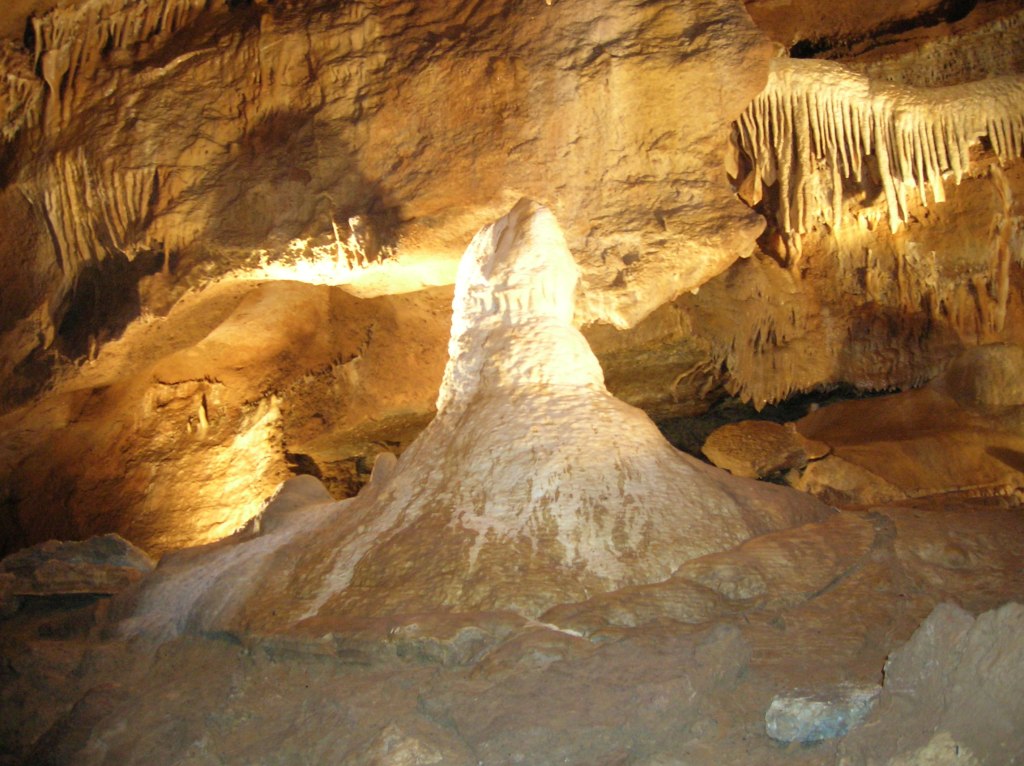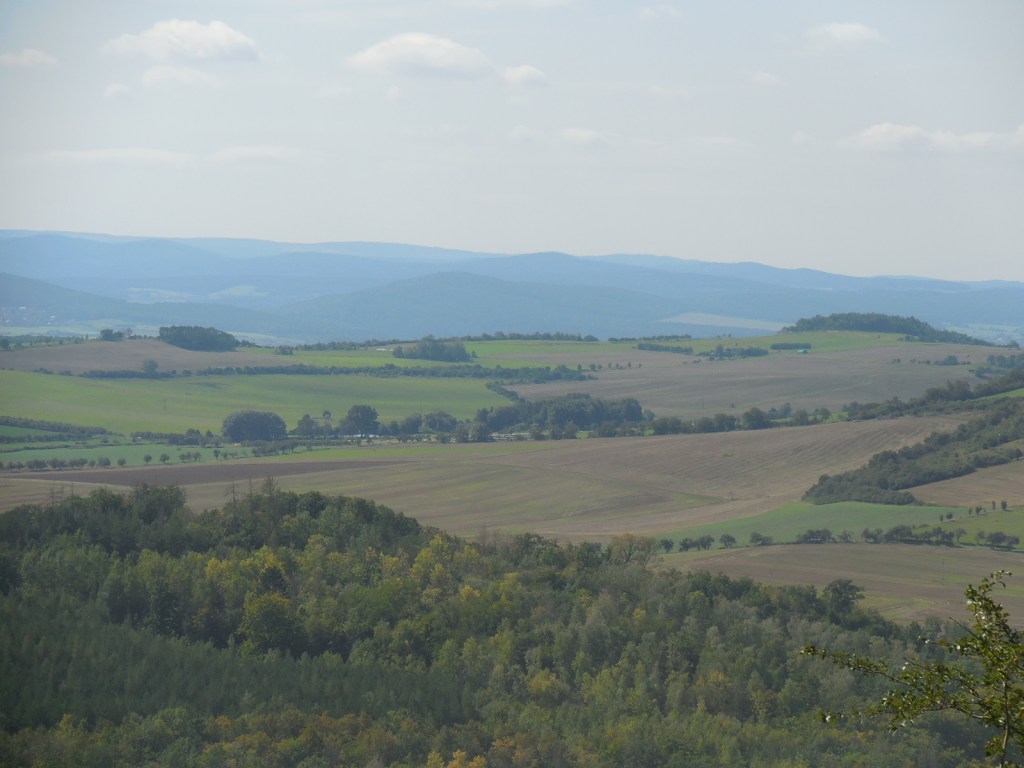
I visited the Koněprusy caves many years ago by taking a train to Beroun, about an hour from Prague, and then going by a small bus to the cave entrance. This time, during the pandemic of 2020, I went by car with a friend, and my journey was much simpler. I was no stranger to caves in the Czech Republic. Years ago, I had accomplished my goal of touring all publicly accessible caves in the country. (Some years ago, I had been a sort of cave addict.)

Located 6 kilometers from Beroun in the Bohemian Karst, the Koněprusy Caves were discovered in 1950 and became open to the public nine years later. They measure 2,050 meters in length. The tour covers 620 meters and shows visitors part of the middle and upper floors. (There are three floors in all.) The middle floor is the longest, dotted with wide galleries and large halls. Waiting for the tour to start near the entrance, I gazed at the eyesore in what was otherwise beautiful countryside – a limestone quarry. A special kind of limestone – Koněprusy limestone – has been mined from this area since the Middle Ages. In fact, one of the foundation stones for Prague’s National Theatre came from this quarry in 1868.

I loved the decoration of this cave system. The ornamentation was one of the most beautiful in the Czech Republic. It is formed by stalactite and stalagmite structures made from calcite.
It was an important tour for my friend, who was claustrophobic who couldn’t even ride the Metro. She told me to slap her face if she fainted. I was concerned, but she was determined to conquer her fear. I was a bit claustrophobic at times, but I didn’t have a problem in caves.

Soon the tour began. The formation Eternal Desire was created by a stalactite and stalagmite that were growing against each other. I saw many unique formations in the Organ Hall, including one that resembled a large organ. It was truly beautiful. I looked down into the 27-meter Letošník Abyss, named after a man who had explored this cave. I was intrigued to learn that medieval boot prints had been found in the area. Large chimneys with stalactite and stalagmite structures dominated the Old Gallery.

The caves were known for its Koněprusy Roses, corallite concentric structures present at the front of the Prosek’s Dome. I set my eyes on the biggest stalagmite in Bohemia – 7 meters high. Little Sinter Lake was astounding, too. Many skeletal remains and ancient tools had been unearthed in this area.

In the Desert Dome, I saw skeletal remains. Part of a skull of a wooly rhinoceros was almost 13,000 years old. Several parts of a human body were just as old. I was fascinated that fragments of a jaw of a macaque monkey were 650,000 years old.

The upper floor was called the Mint for a good reason. There, during the Middle Ages, was a workshop where counterfeiters made money. It was possible to see a secret entrance that the forgers used. A diorama showed several performing their illegal deed.

Then the tour ended. My friend had made it through the tour with flying colors even though we had to walk up a narrow, winding metal staircase with more than 80 steps. She hadn’t fainted or even looked ill. I was very proud of her. Outside we gazed at panoramic views and at the ugly large quarry.

While I was glad I had visited this cave formation again, I didn’t feel the need to tour the other caves once more. I enjoyed exploring caves, but I really was more enthusiastic about chateaus and castles.

We drove on many back roads until we found a restaurant in a village. The chicken there was top-notch. I loved eating in restaurants for locals rather than those geared toward tourists. Then we drove back to Prague, having spent another exciting day outside of the city.
Tracy A. Burns is a writer, editor and proofreader in Prague.


